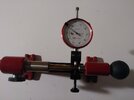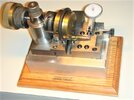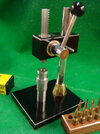Captain*kirk
Member
A few years back I got this Hornady concentricity gauge on sale with free shipping so I jumped on it. When reloading bottleneck rifle carts with a long ogive, it does indeed find those wobbly bullets that are +/- .005 or more, and the nylon screw does allow you to push those carts down to maybe .002 or less. So, does it work? Yes.
However, I recently watched a video where a guy was dissing this as smoke and mirrors gadgetry that is totally unnecessary (in his opinion) as he claims the bullets will center themselves either upon chambering, or upon engaging the rifling upon firing...and this is just Hornady trying to scam more money out of customers. As I mentioned, it will remove wobble down to .003 or less and I have found more than double that in some factory loaded ammo as well as a few of my own reloads. The one thing I have not done is compared straightened loads to out of tolerance loads at the bench. Anyone here done that, or used this tool with favorable results?
However, I recently watched a video where a guy was dissing this as smoke and mirrors gadgetry that is totally unnecessary (in his opinion) as he claims the bullets will center themselves either upon chambering, or upon engaging the rifling upon firing...and this is just Hornady trying to scam more money out of customers. As I mentioned, it will remove wobble down to .003 or less and I have found more than double that in some factory loaded ammo as well as a few of my own reloads. The one thing I have not done is compared straightened loads to out of tolerance loads at the bench. Anyone here done that, or used this tool with favorable results?
Attachments
Last edited:





